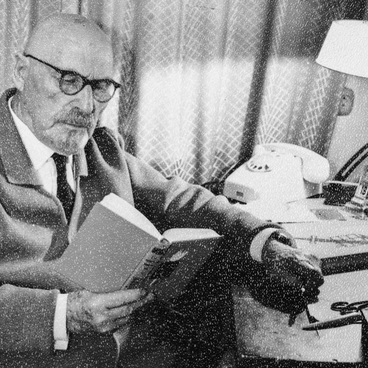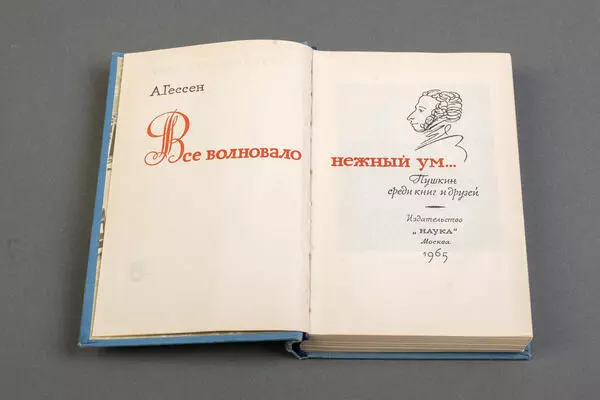The last Pushkiniana book by Arnold Ilyich Gessen called “Life of the Poet” was published in 1972.
Arnold Gessen never claimed to be a Pushkin scholar. However, his many years of experience as a journalist, deep enthusiasm for the Pushkin theme, and close attention to historical sources allowed him to combine strictly verified facts with a lively, fascinating narration in his works. To find the necessary materials, Gessen studied the letters, diaries, and memoirs of both the poet and the people from his circle.
By his own admission, the author did not set himself the task of exploring Alexander Sergeyevich Pushkin’s career evolution, although the work included “elements of analysis of separate aspects of his work.” Gessen believed that his book’s advantage was the emotional narration, and its main goal was to bring the voices of Pushkin’s contemporaries to life and put the spotlight on “the poet’s bright and short life.” The book sheds light on the Pushkin era, the main events in Pushkin’s life, and his meetings and relationship with friends, like-minded people, and enemies. All this allows the readers to “understand the uniqueness of the life, personality, and genius” of the classic of Russian literature.
The book is written in Arnold Gessen’s favorite manner — as a series of sketches, each of them reflecting one or another page from the poet’s biography and creative work.
The book begins with the Pushkin family legend. On the festive night of the advent of the 19th century, little Alexander woke up from the noise and looked into the room where the guests had gathered. Nadezhda Ossipovna Gannibal, the mother of the future poet, took her son into her arms and said,
Arnold Gessen never claimed to be a Pushkin scholar. However, his many years of experience as a journalist, deep enthusiasm for the Pushkin theme, and close attention to historical sources allowed him to combine strictly verified facts with a lively, fascinating narration in his works. To find the necessary materials, Gessen studied the letters, diaries, and memoirs of both the poet and the people from his circle.
By his own admission, the author did not set himself the task of exploring Alexander Sergeyevich Pushkin’s career evolution, although the work included “elements of analysis of separate aspects of his work.” Gessen believed that his book’s advantage was the emotional narration, and its main goal was to bring the voices of Pushkin’s contemporaries to life and put the spotlight on “the poet’s bright and short life.” The book sheds light on the Pushkin era, the main events in Pushkin’s life, and his meetings and relationship with friends, like-minded people, and enemies. All this allows the readers to “understand the uniqueness of the life, personality, and genius” of the classic of Russian literature.
The book is written in Arnold Gessen’s favorite manner — as a series of sketches, each of them reflecting one or another page from the poet’s biography and creative work.
The book begins with the Pushkin family legend. On the festive night of the advent of the 19th century, little Alexander woke up from the noise and looked into the room where the guests had gathered. Nadezhda Ossipovna Gannibal, the mother of the future poet, took her son into her arms and said,






